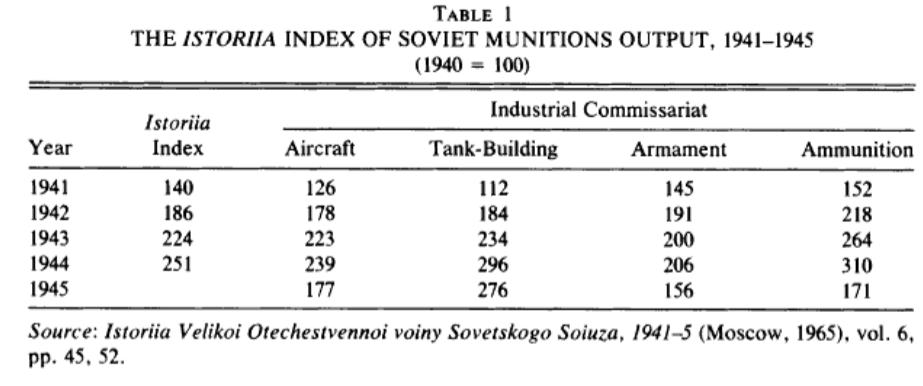The USSR had to relocate some factories as well as ramp up production after the German invasion. They did outnumber the Germans in this department by 1942, but not as much as by 1944, which saw a 50% increase over 1942, especially in ammunition and tank production. (By some Western re-estimates [see table 2 in that article] that increase may have been only 30%, but still a sizeable increase.)

Soviet sources downplay Operation Mars (Rzhev), but it seems undisputed that less ammo was allocated there than to the concomitant Operation Uranus (Stalingrad).
Sweeping offensives across all sectors were not as easy for the Soviets to sustain in 1942 as they were in 1944, just on that angle.
It's also worth recalling that Uranus overran some Romanian armies that were much less equipped with newer equipment like the 7.5cm Pak40 compared to the German troops around Rzhev. The nearby Hungarian and Italian armies in the south were also much less capable of mounting relief operations.
Also, according to Forczyk, 17-18% of the 5cm ammo was tungsten core by 1942, whereas that had been a negligible amount in 1941. This allowed the 5cm guns, in German hands, to be more effective, especially on the defense/ambush position. E.g. the 5cm Pak38 had a 2.4:1 exchange ratio with Soviet tanks in a May 1942 battle around Kharkov. (The 8.8cm Flak was likewise quite suitable for anti-tank defense, achieving a 6:1 exchange ratio in the same battle.)
As another example, in July 1942, after a series of poorly coordinated tank attacks (and poorly
supported by other arms), 40 massed KV-1s managed to break the German lines and partially relieve the 62nd Army. But
this came at high overall cost. In the aftermath Stalin blamed the tankers for finding excuses
in mechanical breakdowns: he admitted that "twelve tank brigades lost 326 of 400 tanks,
of which 200 were lost to mechanical problems". He then claimed that such high mechanical
breakdown rates were implausible and blamed "covert sabotage and wrecking on the part of
certain tank crews who try to exploit small mechanical problem to leave their tanks on
the battle field and avoid battle." In the aftermath, the Soviet high-command introduced a rule that only burned-out tanks could be abandoned by crews. Those abandoning tanks disabled for other reasons would be sent to penal battalions.
Regarding Operation Uranus, the Germans were apparently aware of the low quality of the Romanian front-line divisions, so their plan was to counter any breakthrough in that sector with the 22nd Panzer and the Romanian armored division. The latter had just received 11 Pz.IVG, but had mostly Pz.35(t) otherwise. I'm not sure of the nominal TOE of the 22nd Panzer at that point, but according to Wikipedia's page thereof, it suffered from poor maintenance, so it only mustered 30 Pz.38(t) against the Soviet breakthrough. Both of these Czech-made tanks were armed just with a 3.7cm gun, which was nearly useless against T-34s. So, yeah, against those kinds of odds, the Soviets were able to steamroll in 1942.
